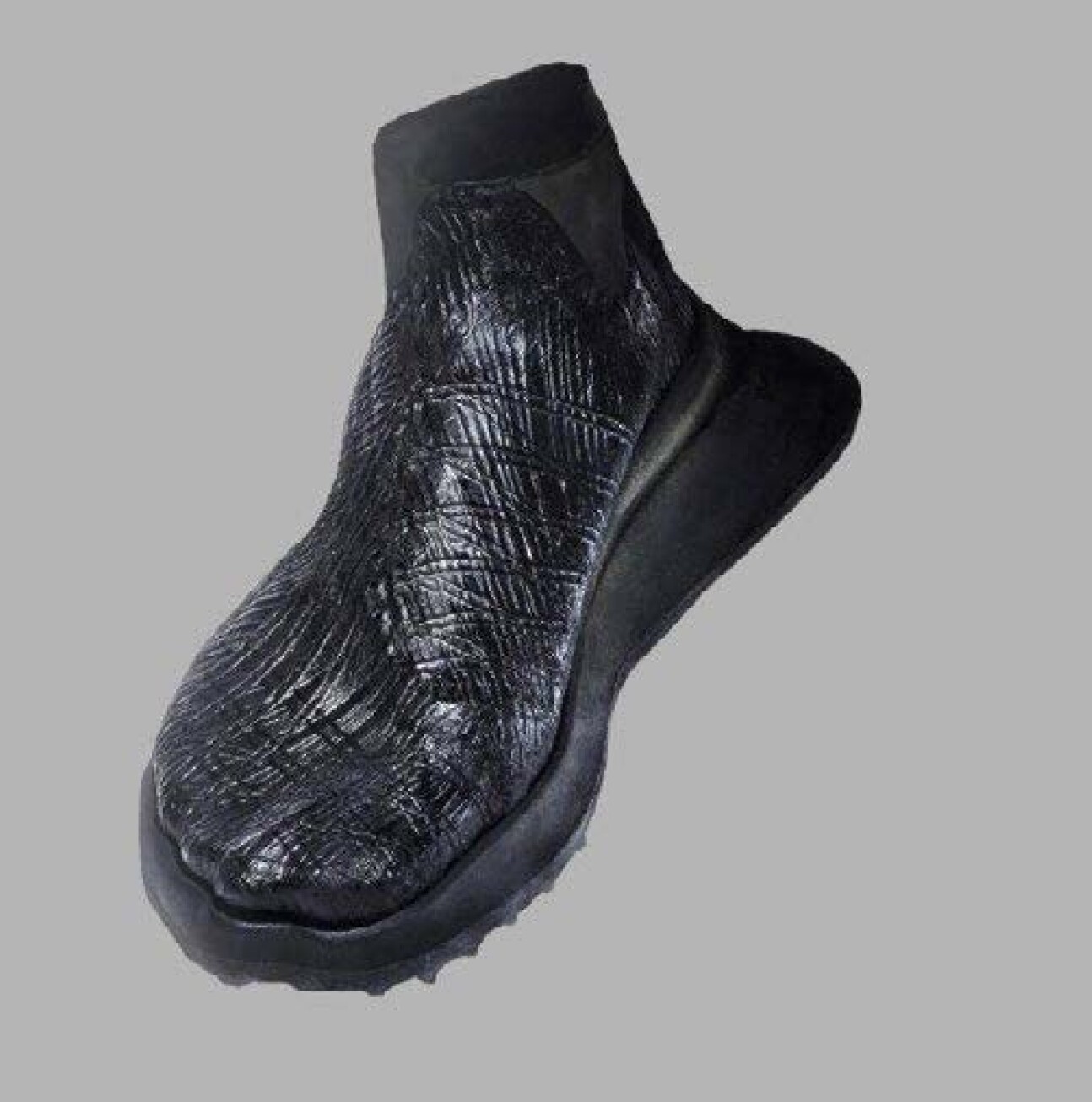In a major step towards truly sustainable fashion, researchers have genetically modified bacteria to produce a vegan, plastic-free leather alternative that can dye itself black. Demonstrating the potential of their new method, the study authors were able to grow a whole shoe (minus the sole) from their tailored microbes in just two weeks.
Like many other materials used in the production of clothes, leather comes with an environmental toll, and researchers are on the hunt for more sustainable alternatives. Among the most promising substances is bacterial cellulose, which is produced by certain bacteria of the genus Komagataeibacter.
These microorganisms secrete linear chains of glucose that self-assemble into a durable mesh of fibers known as a pellicle. As well as making excellent textiles, pellicles can be rapidly produced from waste feedstocks like rotten fruit and therefore come with a very low environmental footprint.

Researchers grew this shoe from bacteria. Image credit: Tom Ellis/Marcus Walker/Imperial College London
However, while the idea of using bacterial cellulose as a substitute for leather is nothing new, scientists had until now struggled to come up with an environmentally friendly method of adding color to these materials. Indeed, synthetic chemical dyeing is among the most polluting processes in fashion, with the black pigments that are used to color leather being among the worst offenders.
To get around this issue, the researchers genetically modified a type of Komagataeibacter to produce the enzyme tyrosinase, which catalyzes the formation of the black pigment eumelanin. Thanks to its low water solubility, eumelanin is an excellent candidate for a textile dye as it is unlikely to run when washed.
Over the course of 14 days, the team grew bacterial cellulose in a shoe-shaped mold using their altered microbes, before gentle shaking stimulated the production of eumelanin, thus dying the material black from within. They also manufactured a black wallet by cutting and stitching pellicle sheets secreted by the modified bacteria.
“Inventing a new, faster way to produce sustainable, self-dyed leather alternatives is a major achievement for synthetic biology and sustainable fashion,” said study author Professor Tom Ellis in a statement. “Bacterial cellulose is inherently vegan, and its growth requires a tiny fraction of the carbon emissions, water, land use and time of farming cows for leather,” he adds.
“Unlike plastic-based leather alternatives, bacterial cellulose can also be made without petrochemicals, and will biodegrade safely and non-toxically in the environment,” says Ellis.
Taking things a step further, the researchers demonstrated that the bacteria could be stimulated to produce pigments in response to blue light. This enabled them to add shapes and logos to pellicles just by shining light on the desired patterns.
Moving forward, the team says it may now be possible to engineer bacteria to produce other colors in a similar fashion, with pigments such as indigo having already been synthesized by certain strains of E. coli.
“We look forward to working with the fashion industry to make the clothes we wear greener throughout the whole production line,” says Ellis.
The study has been published in the journal Nature Biotechnology.
Source Link: Self-Dyeing Vegan Leather Shoe And Wallet Grown From Bacteria